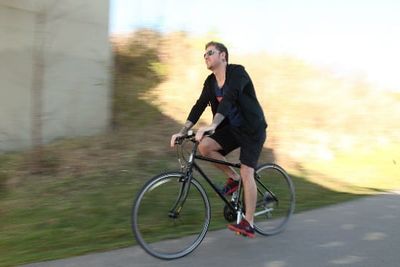There is no question that Nashville is booming: it’s skyline is as defined by its countless cranes as it is by its iconic buildings. With nearly a hundred people a day moving to the Nashville metropolitan area, the face of the city, literally and figuratively, is changing.
As neighborhoods undergo continuous development, Nashville has struggled to maintain its charm and hold onto exactly what has made it such a livable city to begin with. Part of that identity is as a city with significant natural resources at our doorstep.
Protecting and preserving those resources, as well as ensuring access to them by citizens, has proven essential to maintaining Nashville’s status and quality of life. Nashville’s greenways initiative has increasingly been a part of that mission.
According to Greenways for Nashville’s website, in 1991 then-Mayor Phil Bredeson and the Metro Council “created the Greenways Commission as a division of Metro Parks to plan and develop a greenway system of trails and open spaces throughout Davidson County. Members of the Commission and Nashville citizens established Greenways for Nashville (GfN) in 1994 to give the general public a way to support development of the greenways system.”
Mark Deutschmann, who is on the Greenways Commission and is also president of the Board of Directors of GfN, said, “The Greenways Commission is appointed by the Mayor’s Office, and looks to make recommendations to the Mayor’s Office and the Metro Council about which greenways should be prioritized, how much money is needed in the budget, which land needs to be protected, so we’re always looking at strategic acquisitions and where we should be laying down the next miles given budget constraints.”
According to Deutschmann, “GfN takes that information after the city starts making its choices, and we get out and promote that to the community.” GfN supports the Greenways Commission by assisting in securing funding for and encouraging community interaction with the development of the greenways. Their mission also includes a significant outreach component, educating citizens about the greenways system and offering ways for everyone to get involved.
“We’ve had a goal for the last twenty years, since greenways were started, of getting greenways as close to every neighborhood in Nashville as possible,” Deutschmann said. Originally the goal was to put greenways within two miles of every neighborhood in Nashville.
Gradually, though, the goals have become more ambitious. Deutschmann added, “the current goal, particularly in the urban areas, is for every neighborhood to be within half a mile of a trailhead. We are really increasing penetration as the greenways build out, adding more miles to the system and looking to access neighborhoods.”
Greenways have played a significant role in Nashville’s rise. “I have to believe that the greenways, and the emerging system, has really impacted Nashville’s reputation as an ‘it city’—it really helps make us an attractive city.”
Deutschmann, who is also founder of Village Real Estate, observes that greenways also serve to make neighborhoods more desirable. “We find that people are looking for walkability, so being close to either a greenway or a walkable neighborhood commercial district adds value, because people would rather be close to something that’s theirs, so that they can say, ‘This is my greenway, this is my coffee shop, this is my joint that I like to go hang out at.’ If people discover that a greenway is coming to their neighborhood, they will gain value.”
More and more, that means every neighborhood in Nashville will see gains. “We’ve now got somewhere in the range of 85 miles of paved greenways and 212 miles of paved, primitive and park trails,” Deutschmann said, “so we are increasing the number of accessible miles in the greenways system.”
“Over the next few years, the big plan is to create a full loop around the city—a twenty-five-mile loop that will create an amazing bike ride but also access neighborhoods that don’t have any access to date,” Deutschmann explained. “One of the most visible recent successes is the creation of a section that connects from Charlotte Pike all the way over to Franklin Road. The first section has been staked out and is ready for a ribbon cutting. We also got funding in last year’s metro budget for a section that will take you from 12 South over to Franklin Road.”
Greenways depend not only on the support of the government however—the success of Nashville’s greenways also depends on community support. “GfN is a member-driven organization. Individuals can lend their support and we also have corporate memberships available. We’re doing some major fundraising for the I-440 greenway. We’re currently raising a million dollars and are talking to major corporations to fill the gaps.”
But there are also other ways to support a greener Nashville. “We do things like weed wrangles and creek cleanups to, so that’s another way people can get involved,” Deutschmann added.
For more information on Nashville’s greenways, visit GfN’s site at greenwaysfornashville.org and Metro government’s site at www.nashville.gov.
